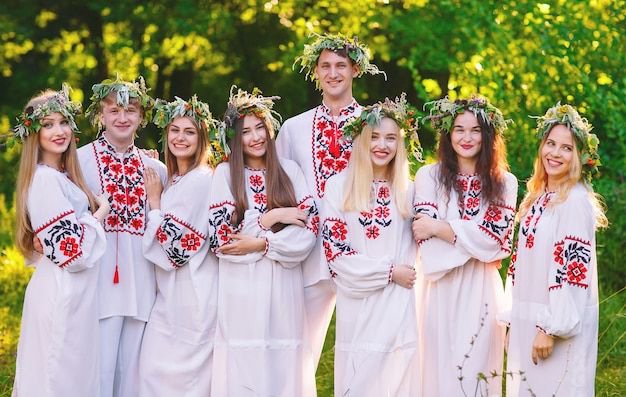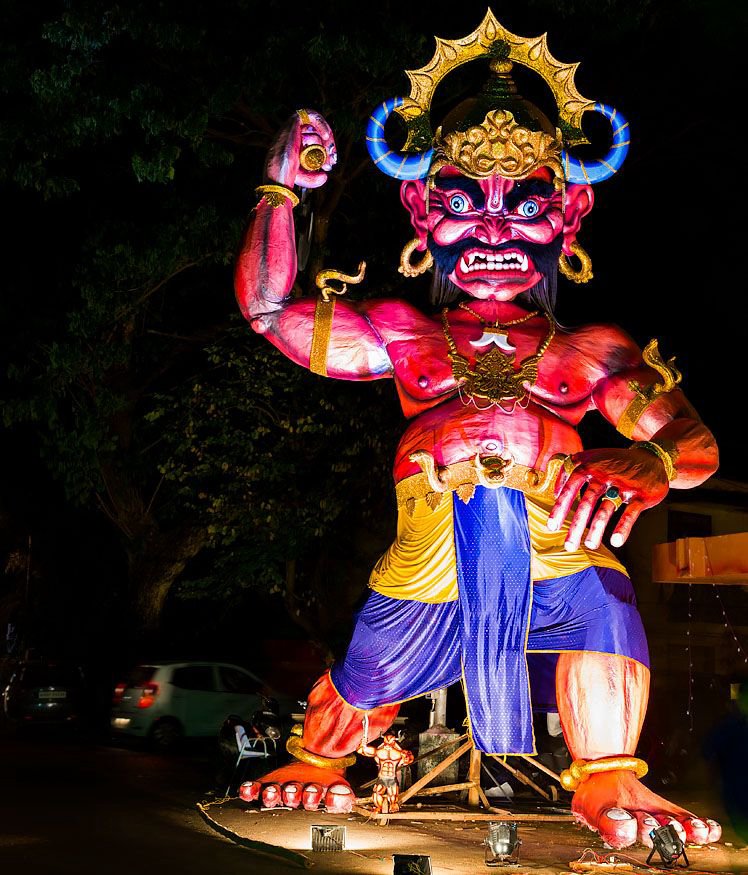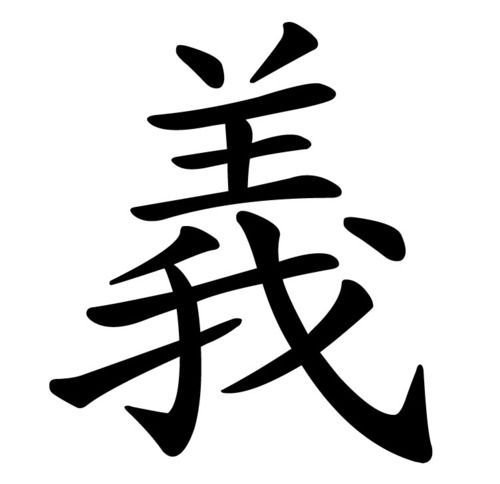The Old World Order : Part 5
Please re-read parts 1 - 4 which have been updated to include additional and more accurate information.
To begin, we return to the timeline and story of the Aser, and a quick recap. We left them in BC 8016, having migrated back to Hel from Gotland, and having rebuilt Raseborg castle, and the cultural centres of Odenma after the two brothers Sven and Dan left the family three years earlier and became the Vikings. The Aser have also reverted back to the full breeding system of twelve brothers and seven sisters and are now ready to begin the procreation system for the world again – however, having been separated* for 50 million years, some parts of the world had other ideas, but more on that to come. Messengers had been sent around the planet, and the ‘Gothic’ tribes (from Gotland) [Goth = Goat] had also been repopulating newly ice-free areas, as well as migrating to other parts of the globe.
* Separate. You could argue that the original gods became separated from their flesh and blood reality by millions of years of disconnection. But the word itself seems to point directly back to them; ‘Separate’ could be broken down to give ‘Sep-Är-Ätte’ - with ‘Sep’ being short for Seppo, one of the titles of Ers / Ra, ‘Är’ [eR] (R) being the Ra itself, and ‘Ätte’ being Family. It could also be broken down slightly differently; as ‘Sep-Pär-Ätte’ – this time with ‘Pär’ meaning father.
The Aser sent out Rabi’s to the furthest reaches of Rusland and Siberia via the river systems using ‘Laxormbåtar’ – Dragon Boats, establishing new ringlands there. Evidence of their presence can be found in the petroglyphs and rock carvings in both Azerbaijan [‘Azer’ = Aser] and Ashov (Azov) Russia – a ‘Hov’ is a Court, as in the English ‘Hove’, and is referred to as the ‘sacrificial site of the As tribe’. Archaeological finds in this area include several ‘fibulae’ which are circular ring-pins used to fasten garments, with those found showing clear affinity to the Baltic, along with other items including a sword found in a burial. Further etymological evidence of their presence and influence worldwide can be found in ‘Asuras’ – a class of beings in Buddhist and Hindu mythology. Interestingly they are defined by their opposition to the Devas (gods), and would therefore be classed as malevolent – another inversion perhaps? However, the Devas are also known as the ‘Suras’ which both begins with ‘Su’ denoting Finland [Suomi], and ends in ‘As’ denoting Aser. In a Buddhist context ‘Asuras’ is translated as a ‘Titan’ or ‘Antigod’, and are described in Indian texts as “powerful superhuman demigods with good OR bad qualities”. In official etymology the ‘A’ in ‘Asura’ means Not – as in they are ‘Not Sura’ however, we can note that they both contain the sound ‘Ur’ meaning ‘Ursprung’ – Origin.
In the middle East, we find the term ‘Ahura’, an Avestan language term, which is an umbrella term for two old Iranian languages. An Ahura is a type of deity inherited by Zoroastrianism (see Ahura Mazda) from the prehistoric Indo-Iranian religion, and is even acknowledged by the mainstream as having linguistic connection to both the Asuras of the Indian Vedic culture, and the Æsir of the Norse. The capital of the Old Assyrian city-state was called ‘Aššur’ or Ashur, also known as Qal’at Sherqat. The ancient Assyrians counted no less than three hundred spirits of Heaven, and six hundred of earth, all of which appear to have been borrowed from ancient Babylonia. The god Ashur was the national god of Assyria and latterly considered the head of the pantheon – the main four are considered to be Ashur, Anu, Enlil and Enki. He was often depicted as a winged bull with a man’s head, and was considered the protector of the ‘Asherah’ – a sacred tree or pole, which itself seems to somehow be inspired by or related to Yggdrasil, the world tree (also an Ash). An Asherah in this sense was a tree or pole that stood near Canaanite religious locations in honour of the goddess Asherah, who was a goddess of ancient Semitic religions, some of whom consider her to be a former consort of Yahweh – but some don’t as it interferes with the concept of Montheism, and thus her name was banned in worship in some places, another victim of the expulsion of the mother, and female principle. An Asherah tree is also often referred to as the ‘Tree of Life’ giving further connection with Yggdrasil. Other notable names from this part of the world are ‘Sumeria’ and ‘Akkadia’ with ‘Su’ as always pertaining to Finland, and ‘Akka’ pertaining to the grandmother figure (retired Svan) within the original pantheon of gods from Odenma.
Returning to the story, and the new world after the ice melts looks something like this; the original system in Odenma was once more in operation creating and continuing the Aser families of Piruuet and Ruuset who are root-speaking, and are then repopulating ringlands in the immediate vicinity with more Van-speaking Vaner people, and the Vaner are once more divided into three classes of Jarl, Karl and Trel. To the West is Svenland (Sweden) also called ‘Svealand’ or ‘Svearland’ – the land of Sven and Svea, and to the South is the ‘Mark of Dan’ or Denmark – the land of Dan and Dagmar, with both peoples speaking the Root language. As mentioned, the messengers have been sent out around the world to re-establish connection with the ten tropical kingdoms – who are told that the Lemminkäinen system is now operational again and that he can once more be All-Father to the world, and given the gifts of agriculture and civilisation.
As well as the Aser travelling far and wide, people from the ten tropical kingdoms are also moving northward to colonise the vast swathes of land now made available after the melting of the ice, which means white-skinned Vaner people from repopulated ringlands of the north are now coming into contact with their brown-skinned pre-ice-age Vaner cousins, with varying results. When the Vaner of ‘Ki-Na’ – China mixed with arctic Vaner, the Mongols were created; when Hindi Vaner mixed with arctic white-Vaner, the Tatars came into being; and when the arctic people mixed with people from Sultan’s lands (East of Crete) the Slavs were created – these were the first hybrid races of man. In some areas the mixing is not taken lightly; we did not mix races or ‘Arts’ in the past as it was recognised that arts would be lost as a result, along with all the things that make them special and unique. This was the reason for the construction of the Great Wall of China, but these events were much later. As with the Ten Tropical Kingdoms, these new races would also each develop their own respective mythologies, which we will be discussed later.
In the Ten Tropical Kingdoms things are a bit different now in terms of breeding; each kingdom is its own family with its own Alfar, but the Alfar-to-be, as in the first born son of the King, or Crown Prince now has the dual function of being breeder as well – which were separate positions in the old system (the sun and the moon). Just as Balder [Bock] and Ers [Ra] were combined into just ‘Balder’ when Viking mythology developed. Previously the King and Queen or, Kuningas and Kuningatar in the northern kingdoms, were heads of state only – now, they were All-Father and All-Mother as well as being in charge.
Circa BC 3000 another messenger, one of the more than twelve sons of Bock arrives in Hindistan. Here, the sitting All-Father for millions of years has been Narkasur / Narakasura / Naraka / Narkasul, whose capital was in Pushkar, where he had a palace in the middle of a lake there. We can note here that the term ‘Palace’ comes from this time and is pertaining to breeding as it begins with ‘Pål’, although the sound has altered over time. Together with the most beautiful and healthy woman in his kingdom, he had a Crown Prince, and when mating with his harem would also create a caste system below him as touched upon in an earlier article – the Maharadia (Maharaja), the Radia (Raja) and the Gatti. [The equivalent title of Maharadia in Kina (China) was ‘Mandarin’].
This son of Lemminkäinen from the north pole is on an ego trip and fancies himself a hero. He has been inspired by the ‘story of Kristina’ – which I touched on in a previous chapter – and calls himself ‘Krishna’, or Krisna, literally the Knowledge (Na) of Kris(tina), ‘Tina’ means Thaw. The story of Kristina was a future story (myth) and within it was contained the Aser’s ten-thousand-year plan to elevate all of humanity via the breeding system to the same soul-power level of a Piroet; the one that should have come to fruition by AD 1984. He arrives with a woman called Radha and some previously unseen animals from the arctic including a hare and a cow. The people, immediately struck by his seemingly infinite wisdom ask him where he got all his knowledge from? He replied – “…from this cow…” – which was instantly made holy, a reverence that endures to this day. This cow was a ‘Brama’ or ‘Brahman’ cow, with a distinctive hump on the shoulder; which according to mainstream understanding originate in in the Krishna Valley no less. The sound ‘Bra’ means Good, and ‘Ma’ as we know means Land, because these animals were actually created in Gotland – the ‘Got’ this time means Good rather than goat – but they are both related in logic via the Bock who is also the ‘god’. The Brahman led to the term Brahmin, a good man – a man that is both good on the inside and good with his hands. The hare on the other hand has somehow become Hare Krishna – coincidence perhaps, but I don’t believe in those – more research is required here.
Hindi has been spoken in Hindistan for millions of years, but Krishna also brings with him a new written-language called ‘Sanskrif’, today called Sanskrit – which was developed from Runeskrif. ‘San’ means True, and ‘Skrif’ is an older version of Script, and exhibits the usual swapping of ‘F’ and ‘P’. We can also note here that the ‘F’ in the original ‘Skrif’ in its lower-case form has flipped 180˚; ‘f >> t’ in becoming ‘Skrit’. With this, and his knowledge of Kristina, he either creates or co-creates the Bhagvad Gita, and the wider Mahabharata – there is debate as to whether it was dictated by Krishna himself, who we must now elevate to god-status, or written by a sage whose first name also happens to be Krishna – hmmm… Nevertheless, in India the scribe ‘Krishna Dvaipayana’ is also known as ‘Ved Vyasa’, in which we can clearly see the sounds ‘As’ or ‘Asa’, which may or may not hint at his true arctic heritage.
Krishna installs a new Preist-Class with the Brahmins at the top, and despite his knowledge of what the breeding system was supposed to achieve, kills Narkassur and destroys the Hindistani breeding system, which technically becomes Hindustan from this moment on. In later Krishna-created mythology, poor old Narkassur, or Naraka is now remembered as an evil demon, and the ‘light’ of his supposed near-death realisation is celebrated at Diwali / Dipavali with the ‘Festival of Lights’ which symbolises the ‘spiritual victory of light over darkness, good over evil and knowledge over ignorance’. Rather an inversion if Naraka was actually the last of a long line of Naraka’s and doing things according to nature, but people like to come along and think they’re bigger than it all don’t they. We can also observe that in the name change, the ‘i’ is lost, the understanding of which was also removed by destroying the traditional breeding system. The ‘Pär-ring’ now becomes Pairing, with monogamy and arranged marriage now instituted within caste – women are no longer allowed to choose up to the caste above and over time, degeneration occurs – which is the real reason there are so many short people in India today. Comparative research has shown that the story of Krishna coming from the Arctic to kill Narkassur is mirrored in the ‘Thorstein Saga’ also known as ‘Þorsteins Víkingssonar’, in which the protagonist ’Kol’ travels to Asia and kills ‘Tirus the Great’ – king of India, then subjugates the land and its people. While there are no ‘official’ records of a king by that name in that area, there is a consensus among African nations such as Kenya, Ghana, Zambia and Liberia that ‘Tirus’ means – ‘A logical King’ and is a term of Greek origin meaning – ‘Ruler or Master’ however we must also logically speculate that it might come from the Root / Norse Tyr, and could be ‘Tyr’ + ‘Rus’.
Completely abandoning the old ways meant that there was no longer any kind of selection process based on health and beauty as per natural law – now the grandparents would choose for the young people – in Europe we had the ‘olderman’ and ‘olderwoman’ making these decisions, the former ended up as the title Alderman (feminine equivalent discarded as usual) who was just below the Mayor, which is logically related to ‘Major’ from the military, but is somewhat inverted as Major’s are almost always men - the terminology ultimately coming from Maija – the Queen of the Planet. Brides were veiled, and most boys had to settle for a cousin on their mothers’ side. What it must have been like for those first couple of generations of women who had known for aeons that breeding up was the best way, to be then suddenly forced to take a lesser option we can only speculate. Perhaps they fell for Krishna’s silver tongue and it didn’t bother them, but I doubt it – when you’ve been doing something a certain way for that long, and you understand the logic of why you do so, it must’ve been incredibly difficult for them. However, the whole concept was now framed differently; if every couple could now breed they could also live like a king and queen in a sense, and every girl could now become a Svan so it could have almost been like a fairy tale come true for some.
The institution of monogamy meant that the concept of the ‘Tor’ friend was also abandoned, as men and women now cohabited rather than living in neighbouring, yet separate camps, where only produce was shared. In the old Heathen ways, men and women lived in an equal society, but now the women were dependant on the men for the first time. Your best friend was now of the opposite gender, causing all sorts of misapprehensions, which would thousands of years later result in phrases such as “Men are from Mars, and women are from Venus”. The family unit as we know it arguably comes into being here too, as previously all children were taken care of by the women, with the boys leaving for the men’s camp at the age of seven. But because the lower class men – previously ‘Untouchable’ - are now allowed to breed, the population explodes and the children of the Gatti form a new caste known as the Out-Caste, and that part of the world becomes a bit congested.
Of course being ‘civilised’ meant adherence to pre-determined thoughts only, as laid out in religious texts and regularly rammed down your throat by the Brahmins, which has had many parallels the world over – funny how force can breed devotion, it’s almost a form of Stockholm Syndrome. Over time, the practices and knowledge of the past became mostly abstracted and lost. A few abstract customs remain such as the offering of milk and bananas to ‘Yoni’s’ and ‘Lingams’, but the real meaning behind them is long forgotten. As has been mentioned previously; the lotus is really symbolic of genetalia, just like the rose it is representing the glans of the penis, with the lotus bud representing the penis of the All-Father, from whom the seeds of all human life came. However, it also has a meaning on the feminine side; when an Indian lotus, or Padma opens its petals in the morning one can admire the reddish inner view, the jewel of the All-Mother / Earth-Mother – Akka.
The breaking down of the once global family to individuals, and making them mother and father of their own family has been going on for a long time now, and is symptomatic of a wider trend. Imagine a graph where the data needs to be expressed either side of a zero point; a kind of scale – with the once global family on the far left as the first data point. As we move left to right along the scale in the direction of the zero point, the next data point would be the subsequent king-systems as developed in the tropical kingdoms, followed by marriage in-caste as described above. Or to look at it another way, we started with a king of the planet, then the model became more regional, then ultimately local, as every man now became king of his own castle. In parallel, or on a similar graph or scale we can start with the once global family once again, who all had brown skin, brown hair and brown eyes; again, as we move left to right along the scale towards the zero point, the next data point would be changing from one family to eleven global families during the ice-age, and the resultant ethnic diversification from each having their own separate All-Father system. Following that would be the institution of marriage and monogamy, whilst locally perhaps not creating much more mixing, but on a wider scale allowing for the mixing of races under the same religious banner and much later on. full mixing in a secular society.
But in another twist, the big change also caused another outcome – some men chose to fully abstain from both pleasures of the flesh - becoming celibate - and material wealth which was eschewed – becoming ‘Sanyasi’. These men became the wise and spiritual men, the ‘Sadhus’ and ‘Babas’ (which also means Father [Papa] or Uncle), and have wandered mother India since this time. They are also sometimes called ‘Naga Sadhus’ or ‘Naga Babas’. They often dress in saffron coloured clothes, and are focussed on Ascetic Yoga and other spiritual practices in a quest for enlightenment, or ‘Moksha’ – the liberation from the endless cycle of life, death and rebirth, or ‘Saṃsára’. This freedom is attained through the knowledge that the ‘Ātman’ or Self is identical to the formless metaphysical absolute which is known as ‘Brahman’, which in Hinduism connotes the highest universal principle, the ultimate reality of the universe – a marked, and slightly more complicated departure from its original meaning of simply a man who is good inside and out – or do they mean the same thing?
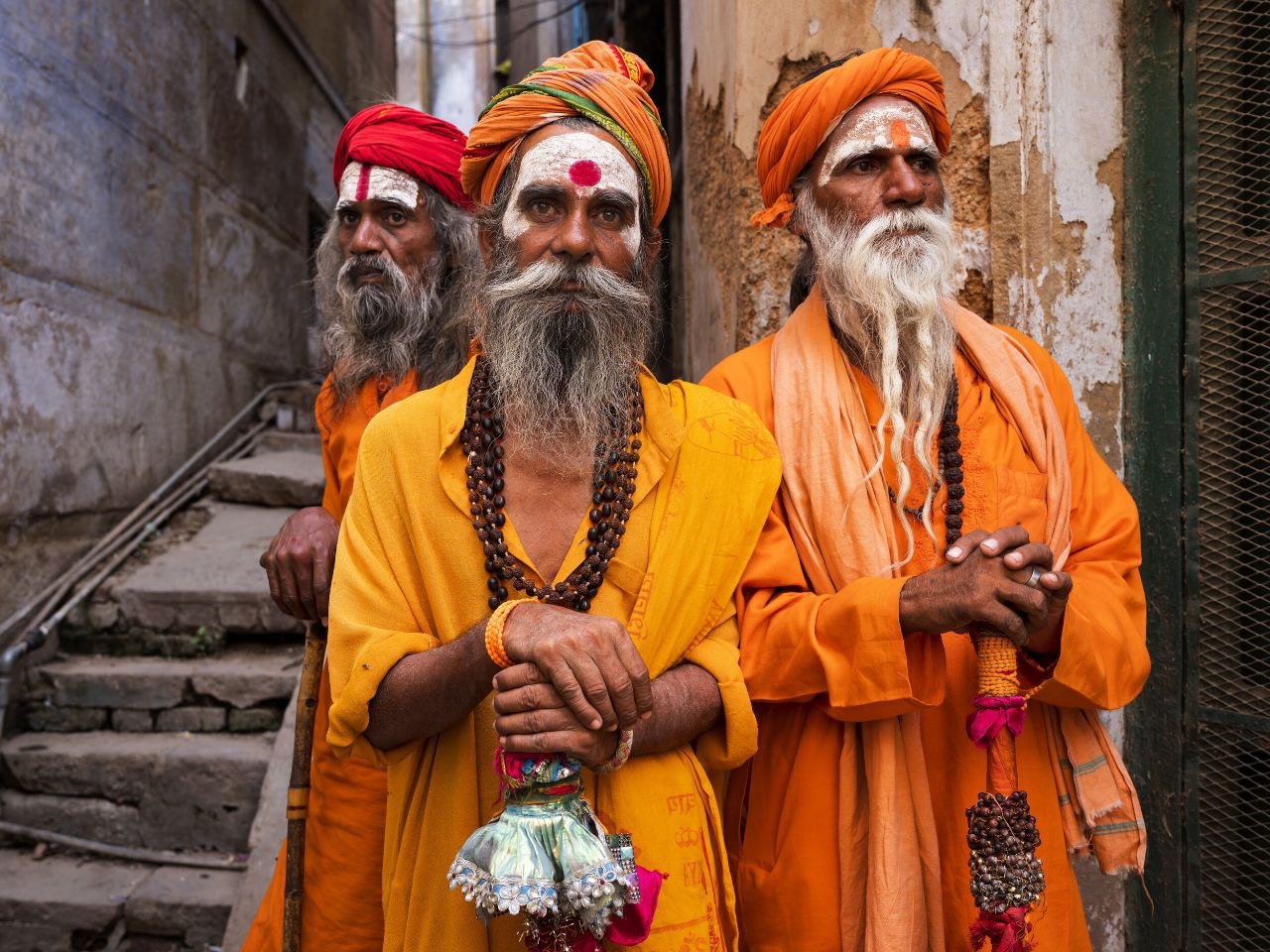

But that begs the next question; what happens when we go past the zero point, and start heading up the scale the other way, or rather – doing things the wrong way, the opposite way from previously, or not according to nature? These points by the way are in no way intended to be racist in the modern understanding, rather to draw logical conclusions from things that don’t usually get discussed – most people are some kind of mix today, it’s the norm. In the case of the fragmentation of the global family, it has allowed us to be controlled by those who only have selfish ends as we are no longer united, and in the case of racial mixing it seems to have already gone past the zero point somewhat. While this isn’t a problem on the surface, it was recognised in the past that ‘Arts’ would be lost if arts were mixed together, and uniqueness would disappear. If we extrapolate the data and assume that racial mixing continued unbridled, then logically speaking we would end up one day with a planet full of medium-brown coloured people again. We could argue that this actually means it’s a cyclical rather than linear scale however, one people with a mono-culture, one shared religion and no real diversity is the ultimate aim of the powers that be – and is the basic aim of several well-known agendas which end with dates in the future – yes those ones. This means it is not a natural cyclical scale, as none of this happened naturally did it, it’s a kind of opposite model – the linear scale is the unnatural one, a kind of forced uniformitarianism. The problem is that the powers that be of the world are building the population up the other side of the zero point, or the tipping point in their own image, and according to the model they want.
Before we move forward with the overall story, I want to link knowledge from Hindistan to one of the aforementioned first hybrid races and their mythology, namely the Slavs; who are recorded as being created from the racial mixing of post-ice-age white Vaner from the North, with the people from Sultan-ruled lands – which could be anywhere East of Crete. Unfortunately, this information probably won’t sit well with orthodox Slavs who believe they are of pure Aryan heritage, just don’t shoot the messenger. One example which is pertinent to discuss in relation to Bock Saga is; ‘The Ancient Russian Ynglist Church of the Orthodox Old Believers’. The adherents of Ynglism call themselves Ynglings or Ynglist, and there is mention of them in Yngling Saga. This link takes us to Sweden and the house of ‘Lingaet’, which was the original line of Sven, and named for the berry. A branch of this family sperm-line was Ynglingaet, which was the line of Rurik – the Varangian chieftain of the Rus. According to the Ynglist Church, the terminology comes from ‘Yngliya’ – which they approximately translate as ‘Primary Divine Fire’. We could perhaps say that the seed of Sven was the primary divine fire of Lingaet, with fire and sperm being two of the five aspects of Oden – but this is merely a delve rather than a full etymological investigation just yet. In sound-system we could say that the ‘Slavs’ are the people who love the sun; S = (eS) = Sun + Lav = Love.
Ynglism comes under the umbrella-terms of Slavic Paganism or Slavic Neopaganism – commonly known as ‘Rodnovery’, and as we will see, has affinity with Norse mythology as well as other influences. I think the zero-point scale is also relevant here, as when Neopaganism gets a resurgence in various places, its practicioners are already past the zero point as the original understanding and most of the logic has already been lost. This is pretty much the same scenario as with the modern Druids of Britain, they may dress the same and call themselves by the same name, but real Druids they are not.
The holy writings of Ynglism are the ‘Santies Perun Vedas’, also known as the ‘Slavic Aryan Vedas’, but ‘Vedas’ are usually from northwest India and written in Sanskrit right? While this is true, many northern dialects have similar sounds to, and some are even based on Sanskrit, such as Russian, Slavic and Lithuanian plus other languages in the Balto-Slavic family. In a study of the ratio of consonants to vowels; Russian and Sanskrit are an exact match – the Russian of Dostoyevsky and Tolstoy – their melody and rhythm being very similar indeed, and both having a similar number of cases of declension. The sound ‘Veda’ means knowledge in Sanskrit, which is the root of the sound ‘Véd’ in Russian (вед) which can be added to other sounds to form longer words such as ‘Védat’ (ведать) meaning to Know. ‘Ve-Da’ actually means He / She Knows, and has a parallel in Old English ‘Witan’ which means to Know. However, it includes the ‘Wi’ sound which IS ‘He / She’ because it’s an archaic way of writing ‘We’, as is the ‘Ve’ in Veda, which we can trace to the Root sound ‘Vi’ as in ‘Vikings’ meaning We / Two. The second part of the word ‘Tan’ is looking very similar to the second half of the word ‘Vital’ which we already know from the study of root sounds to mean We Tell [Täl], and in the past knowledge was spread orally. The sounds of ‘T’ and ‘D’ can easily be interchangeable in many dialects so I think we can logically say that the terms ‘Veda’ and ‘Vital’ are two variants of the same thing. While we’re on the subject; In Indian philosophy and religions, ‘Jñāna’, sometimes written as ‘Gyaan’ (Sanskrit: ज्ञान ) means Knowledge. The root of ‘Jñā’ (Sanskrit: ज्ञा ) is cognate to the Slavic ‘Znati’, English Know, as well as to the Greek γνώ- (as in γνῶσις: Gnosis) and Lithuanian Žinoti. Its antonym is ‘Ajñāna’ (Sanskrit: अज्ञान ) meaning Ignorance.
The adherents of Ynglism believe in ancient extra-terrestrial ‘Aryan’ gods, whose origin or time of arrival is unknown. It is said that these gods lived at the ancient north pole, on a now lost continent called ‘Daaria’, (which they also equate with Hyperborea, Thule and Avalon) and were responsible for the creation of white people before the continent was destroyed – the ending at least is very similar to the tale of Atlantis. A remarkable extrapolation of the original tales of Odenma of old, but now introducing not just abstracted off-world gods, but science-fiction-style themes of extra-terrestrial beings, a theme which continues throughout. Their sacred symbol is the Swastika, which as we know originally symbolised the life-wheel at the old north pole, so you’d think the interpretation would be close; but in Ynglism, the Swastika represents the supposed four arms of our galaxy, two of which cannot be seen with current technology and are therefore yet unknown to science.
The Perun Santies are purportedly written some forty-thousand years ago, which would place its creation during the ice-age, during which at that stage, there were only 30 or so white people on the planet who had not yet emerged from the ice. It is apparently only a part of what they refer to as ‘Aryan’ heritage, and there are apparently and according to the notes which accompany the English translation from Russian, more Santies kept hidden by ‘Sage-Keepers’ – whom have also heavily censored parts of the text even for its adherents, which is of course highly suspicious. It is not really a book, but a collection of writings taken from a set of inscriptions on “plates, made of noble, non-rusting metal, on which are inscribed Ancient H'Aryan Runes” – which was a worldwide tradition. It is unclear whether these plates are still in existence, but in the stories Earth is referred to as Midgard – as with the ‘mortal realm’ of the Norse – and within is contained a description of a place called ‘Irian Asgard’ – which according to the notes is considered to be in the location of modern-day Omsk, Russia. But that’s not the only one, there are four! In another section of the text, it is said that a place called, ‘Sveyen Asgard’ burned down in a great fire, and that a new city was built in its place called ‘Uupsala’. This is another reference to Sweden and possibly, from where the link with Lingaet / Ynglingaet comes.
The principle deity is called ‘Perun’, which immediately suggests connection to the original Pagan breeding system, as it basically translates as One Father – with ‘Per’ coming from Pär, and ‘Un’ being One. He is also referred to as ‘Perun Thunderer’ – which gives us a more solid connection to the old Pagan All-Father, Ukko. Whom in modern Finnish mythology is the god of thunder. In modern Finnish the words ‘Ukkonen’ and ‘Ukkonvi’ both mean Thunder. Perun arrives on earth in a fiery chariot called a ‘Vitemana’, which is almost identical to the Sanskrit Vimana – the ancient flying machines or ‘Chariots of the Gods’ described in Indian epics and Jain texts alike. The name transferred to modern-day flying machines, and in Hindi a ‘Vimaan’ is an Aeroplane – but a ‘Vimana’ is also the structure over the Garbhagriha, or inner sanctum of the Hindu temples of South and East India. It further elaborates that there are bigger motherships called ‘Vitemaras’ in which up to one-hundred and fourty-four Vimanas can dock. Confusingly, Perun is the son of another god - ‘Svarog’, and in another twist in this mythology, Odin is the son of Thor, inverting the classical Norse view.
In part four we listed many places associated or inspired by the original earthly paradise – the garden of Oden – Odenma, and at the end of that list was a place called Vyriy / Iriy, called ‘Vyrai’ in Belarusian, and ‘Wyraj’ in Polish, which is a mythical place where souls go after death in Slavic mythology. The god Perun reveals that; “…I came from Uray-Earth, from Heavenly Svarga, where bright Iriy flows, in the gardens of Viriy, near Heavenly Asgard…”. Off-world connotations aside, here we have three links to the old north pole in one sentence; Heaven(ly), Iriy, Viriy and Asgard, which is the third mention after ‘Irian Asgard’ and ‘Sveyan Asgard’ – Heavenly Asgard, and Irian Asgard should be the same place in logic, but one has been placed off-world, and is thus not the third in the list. The word ‘Uray’ contains the sound ‘Ur’ so may have connection to ‘Ursprung’ meaning Origin. The other Asgards are, ‘Daarian Asgard’ [destroyed] – said to have been located atop Mount Meru (there it is again), and ‘Sogdian Asgard’ - said to be in Asia Minor, in ancient “Nissa” city. This would be ‘Nisa’ in modern-day Turkmenistan, which was also known as ‘Parthau-nisa’, owing to the fact that it was the ancient settlement of the ‘Parthians’. The Parthian Empire was also known as the Arsacid Empire, named for its founder – ‘Arsaces’. The beginning of the word ‘Arsacid’ looks so remarkably similar to Aser that we cannot let it pass without comment. ‘Arsaces’ even resembles ‘Aser says’, or perhaps ‘Aser Ce’s’ and alluding to a curved penis, but that might be a stretch. However, the ruins of Old Nisa are located in a place called ‘Ashgabat’, giving us further pointers to the old north pole, the Aser and either ash and / or ash trees.
It is detailed that, “H'Aryan, D'Aryan, Russen, Svyatorus: (are the) Four initial Kins of the White Race. They differed from each other in the colour of their eyes [It is not known for sure, what exact colour each Kin had, but unconfirmed sources state that H'Aryan – Green Eyes, D'Aryan - Grey Eyes, Russen - Brown Eyes, Svyatorus - Blue Eyes]. Colours of their eyes are explained by a colour of Star, which shined in a System, from which each Kin arrived”. The H’Aryan and the D’Aryan are further classified as ‘The Great Race’, and the Russen and Svyatorus as ‘The Heavenly Kin’. While we obviously do not accept that anyone comes from outer space, it is interesting that they speculate four white races, versus the three white races that emerged from the ice at the conclusion of Altlandis. There is much more to delve into regarding Ynglism, and how it ties in with other mythologies, which we shall revisit in subsequent articles.
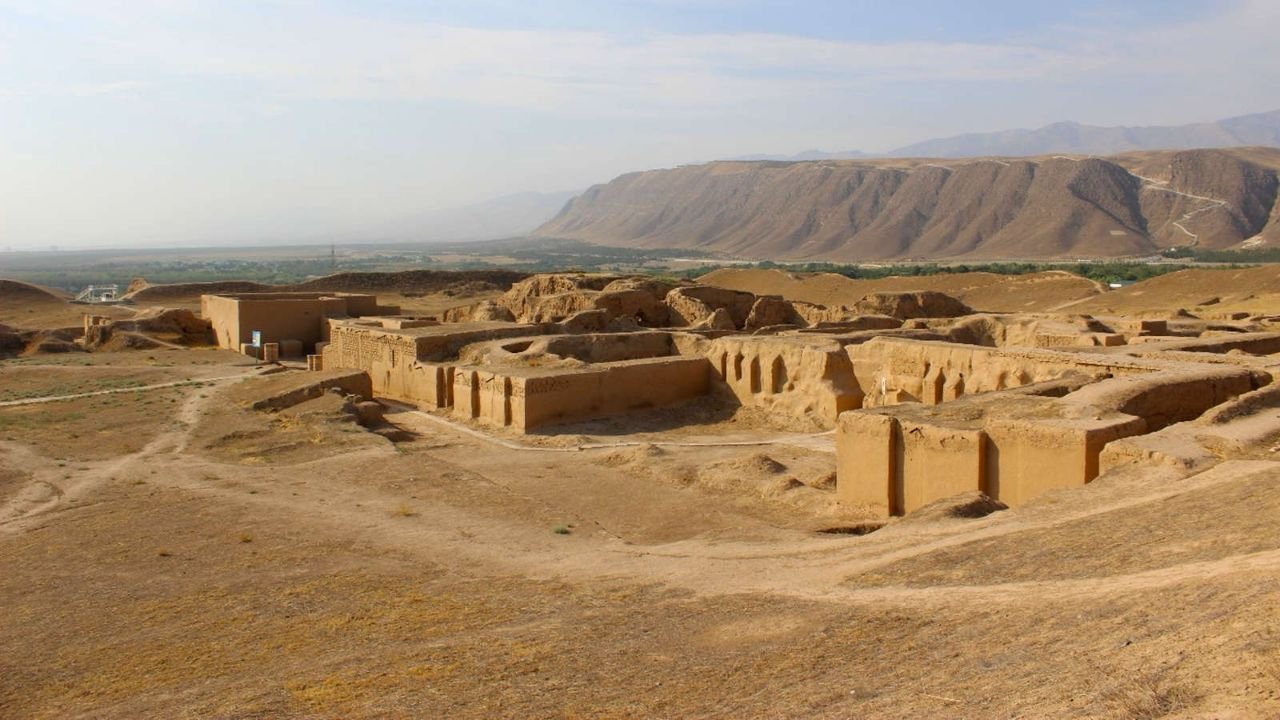
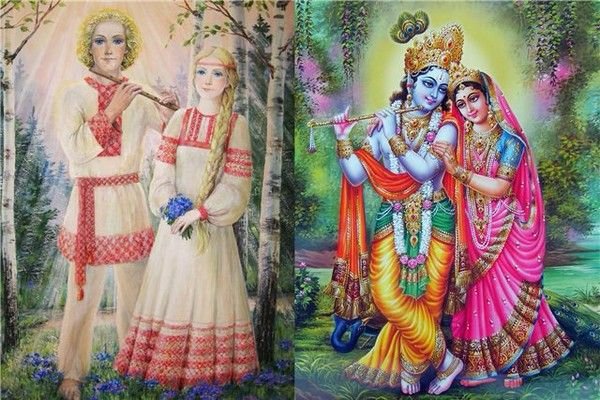
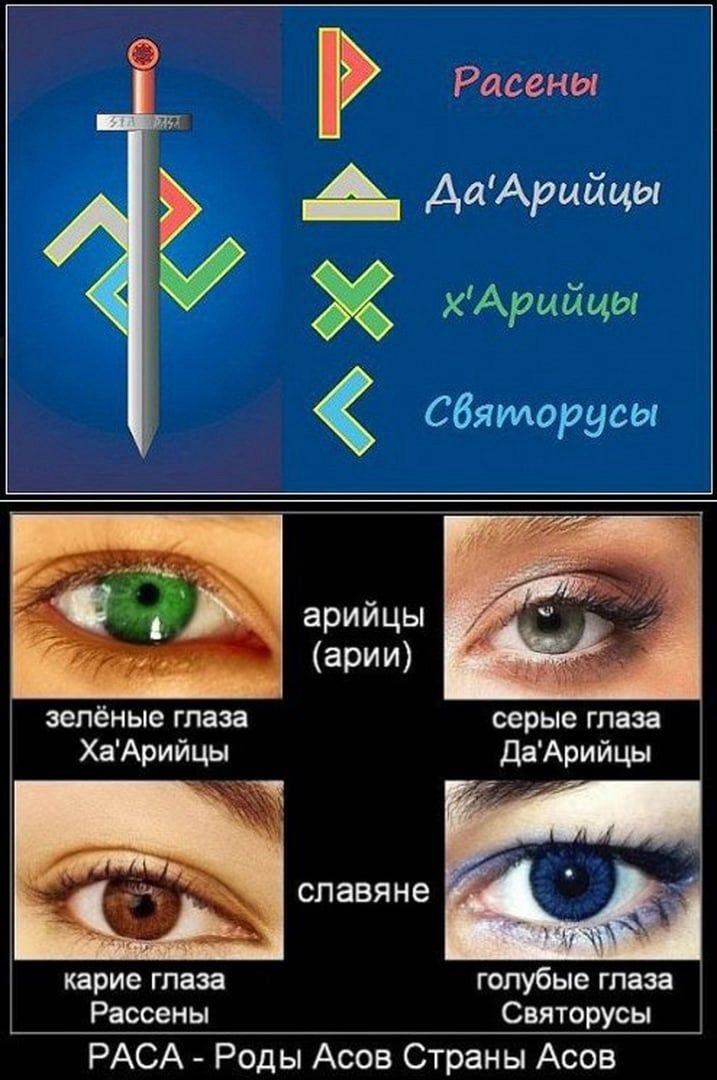
Returning to the fallout in Hindustan. As a result of the dismantling of the breeding system, the top caste of breeders the Maharadias (Maharajas) became kings in their own territories, which then became separate kingdoms in their own right. Their offspring in the caste below, the Radias (Raja’s), Siennare and other dignitaries were left without functions, so they decide to pack up and leave – travelling in a ‘Karavan’ – Caravan of camels; ‘Kar-Ra-Van’; the ‘Kar’ people are the middle class, ‘Ra’ is the king of the old system, but ‘Raja’ is the equivalent of the Rabi in the tropical king-system of this era and area, and they are all Vaner people. These people now head for Egypt because they have heard that it still operates a pure breeding system. When they arrive they ask the Pharaoh for asylum which he grants on the condition that they must not mix with his people, and they are placed out of the way so to speak within the lower caste. There was no purpose for these child-making officials any more, not even here, so in desperation they send a message to the All-Father in Odenma because they would like to go to the Hol-i-land. The god in Hel feels their plight of being lost in a foreign land with nowhere to go, and so circa BC 1300 sends an emissary who is supposed to guide and accompany them back to Odenma.
This emissary is one of the more than seven daughters of Bock / Lemminkäinen, a ‘More’ called ‘Morce’ / ‘Morse’ (say ‘More-say’), whose name is a combination of ‘Mor’ = More and ‘Mor’ = Mother, plus she had the say. This person would, in much later mythology become known as Moses – the man. Fortunately, or unfortunately for the aristocrats from Hindustan, Morce did not guide them back to Odenma – they embarked on their journey but ended up in Canaan (Sultan lands) where most of them settle. It becomes apparent at this stage that Morce is also on an ego trip, like her relative Krishna whom she copies, and institutes a new breeding and information system – a new ‘Pa’ system. Among the dignitaries from Narkassur’s old breeding system are the pair of Radia (Raja) [equiv. Rabi] and the Siennare (whose Inidan title I am unsure of at present). They became immortalised in a new story created by Morce; as Adam and Eve in the Torah (‘Tor’ + ‘Ra’) [Heart of Ra], which took the garden of Oden – Odenma and made it the Garden of Eden, the first of five books written by her. Here in Persia she tries to create her own holy land using concepts taken from Hel; the seven temples, seven hills and seven islands of Odenma become interwoven into a new story, and the ‘Seven Laws of Noah’.
As some readers may or may not know, Bock Saga is not the only source that regards Moses to have been a woman. During the first half of the 1st century BC, there was a Greek scholar, who was enslaved by the Romans during the Mithridatic War [BC 88-63] and was taken back to Rome as a tutor. When eventually released by his captors he decided to remain in Italy, and became a great writer – so prolific, and respected was he that he was dubbed ‘Polyhistor’, meaning – Very Learned. His full name was Lucius Cornelius Alexander Polyhistor, also known as Alexander of Miletus, and most of his writings are now lost or destroyed. They included historical and geographical accounts of nearly all the countries of the ancient world. However, one of his remaining works titled ‘Upon the Jews’ states that the Law of the Jews was given to them by a woman named ‘Moso’.
Using her knowledge of the sound-sytem, or ‘Ju’, Morce creates the first system of black characters on white paper, a new language and writing system with a mark (letter) for each sound. In doing so she subverted normal thought processes by capitalising on how our eyes work; because eyeballs are round, the cornea and lens are curved and refract the light entering, creating an upside-down image on the photoreceptors of the retina in order to create a focussed image which is also projected to the back of the brain, where the optic nerve sends the nerve impulse information that is then interpreted and flipped 180˚ into the image you ‘see’. In doing so the new characters were seared into the mind, preventing the process of eliminating the illogical or rather, being able to separate that which is unnatural from that which is ‘Nat-Oral’ – Natural, logical and normal – as would have been possible with previous languages derived from the sound-system, and natural logic, or even runes and pictograms, all of which made you use the associations in your brain. Despite being billed as a kind of step out of the ‘Dark Ages’, the advent of the written word was actually a step backwards for humanity and was used to devastating effect in controlling thought patterns and consciousness.
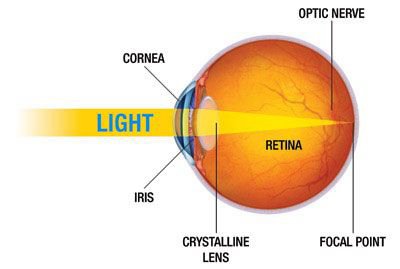
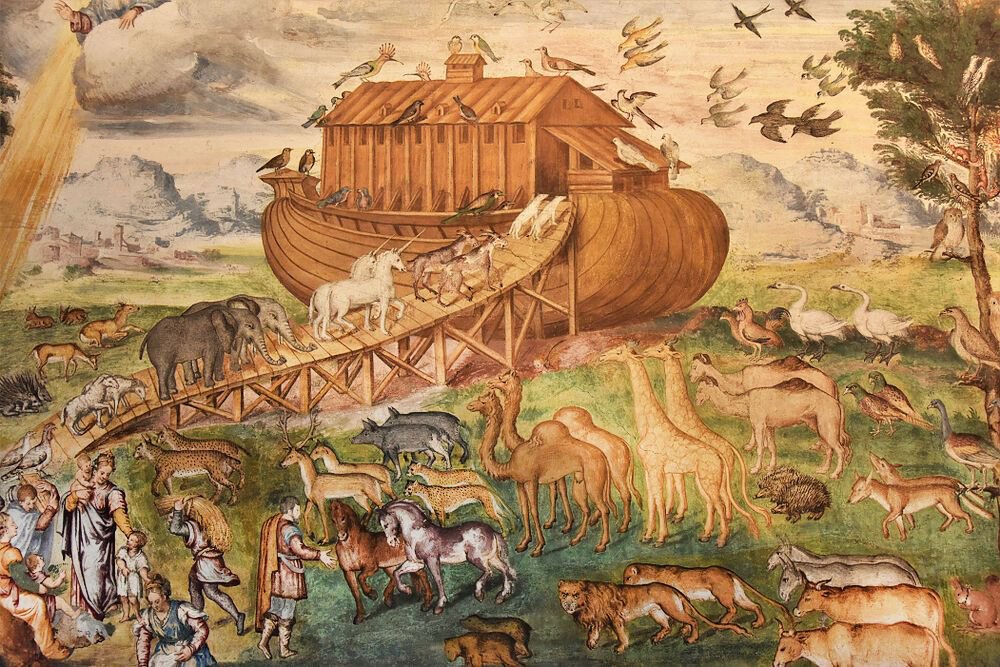
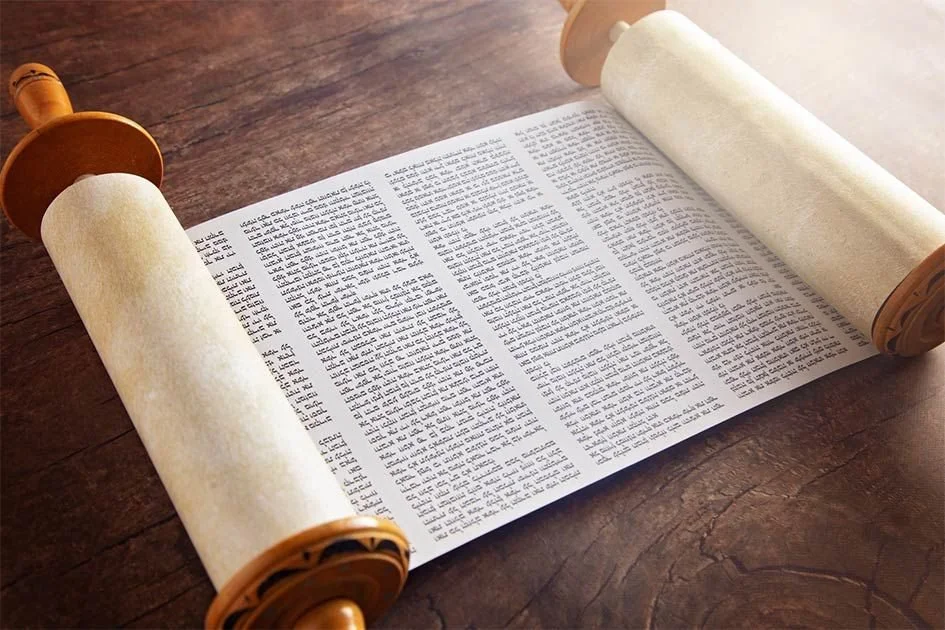
In creating the Torah, Morce as with Krisha killed the heart-friend once more – the Tor (say ‘Toor’) [M] and Tora (say ‘Toorah’) [F]. Not only this, but by instituting the concept of circumcision, she made a direct attack at the true hearts of all men. It is observed that the tip of a circumcised penis can tend to become de-sensitised after the procedure due to the friction of not being safely housed in its natural sleeve. But when we apply our knowledge of natural law, we observe something entirely more sinister; what is actually happening is a gradual de-sensitising, or hardening of the heart, the most sensitive part of a man’s body. This hardening makes the man less sensitive as a person, which then affects his personality and other attributes. It should therefore come as no surprise that most large-scale modern conflicts in the world - either on their own or against each other - are usually caused by or involving peoples who have this tradition. The knowledge of this brutally unnatural practice makes the already evil practice of female genital mutilation, otherwise known as FGM – which is commonplace in the western, eastern, and north-eastern regions of Africa and parts of the Middle East and Asia – all the more barbaric. The removal of the clitoris is the removal of a woman’s light and heart, and removes her ability to connect with nature and herself, not to mention her i-mun system. Nothing symbolises the removal of the feminine principle, the removal of the goddess - sometimes called the ‘Divine Feminine’ – than this horrific tradition, which is nothing short of abhorrent, and further serves to illustrate just how far the Re-legions have made us fall from grace. “God told me to do it”
Included in the writings are a future-story (myth) in which one day a man will come and bring the knowledge of how everyone can be at peace with each other, the ‘Messiah’, and a past-story (legend) which took the old story of Gubben-Noa escaping to Nōa-tun on Gotland with the rest of the Aser and the animals they had created under the ice, and turned it into the story everyone knows of Noah’s Ark escaping the great flood. We also see the first introduction anywhere of a single masculine supreme-deity, God with a big ‘G’, also known as Yahweh or the ‘Bearded Sky Fairy’ depending on whom you ask. There was no place for the woman, which seems quite bizarre when all this was set in motion by a woman. We can say that this was the beginning of monotheism, the first time that the previously flesh-and-blood gods of the real world became an abstracted singular entity in a concocted fantasy, and where the guð inside has been inverted to God outside and truly forgotten about. Worse still was that this model was then copied and pasted as it were around the world and into the other two Re-legions, which generated the priest-class who revelled in their exclusivity of knowledge, and would ultimately bring about the predicted third Ragnarök. The fact that Moses was actually a woman could be the real reason Orthodox Judaism practices matrilineal descent, rather than the natural patrilineal – which is obviously linked to the fact that you get your soul from your father, from his Ra – your mother gives you her ‘En-eR-Gi’ as discussed previously.
Some of the people didn’t like this new book, or its new teachings and rejected them entirely. The old Rabi’s (who were Radia / Raja in Hindustan) stayed and became the Jewish Rabbis, but the Siennare’s left in wagons all over Europe, some even made it to the Hol-i land, and are still to be found to this day in Finland. These people who originally left Hindustan in a caravan, that travelled to Egypt are the original Gypsies, (an alternative meaning is ‘Deep-see’) and many are still wandering today such as the Roma, or Roamer. However, this also means that both the Gypsies and the Jewish people are the same people, both originally the children of Narkassur. When these people travelled from Hindustan, they brought with them an instrument called the ‘Sitar’, which was then later developed into the Guitar – however, the sitar itself was originally based on a ‘Kantele’ which is a traditional stringed instrument from Finland, the national instrument no less.
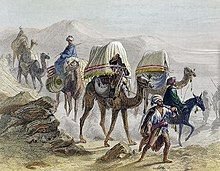
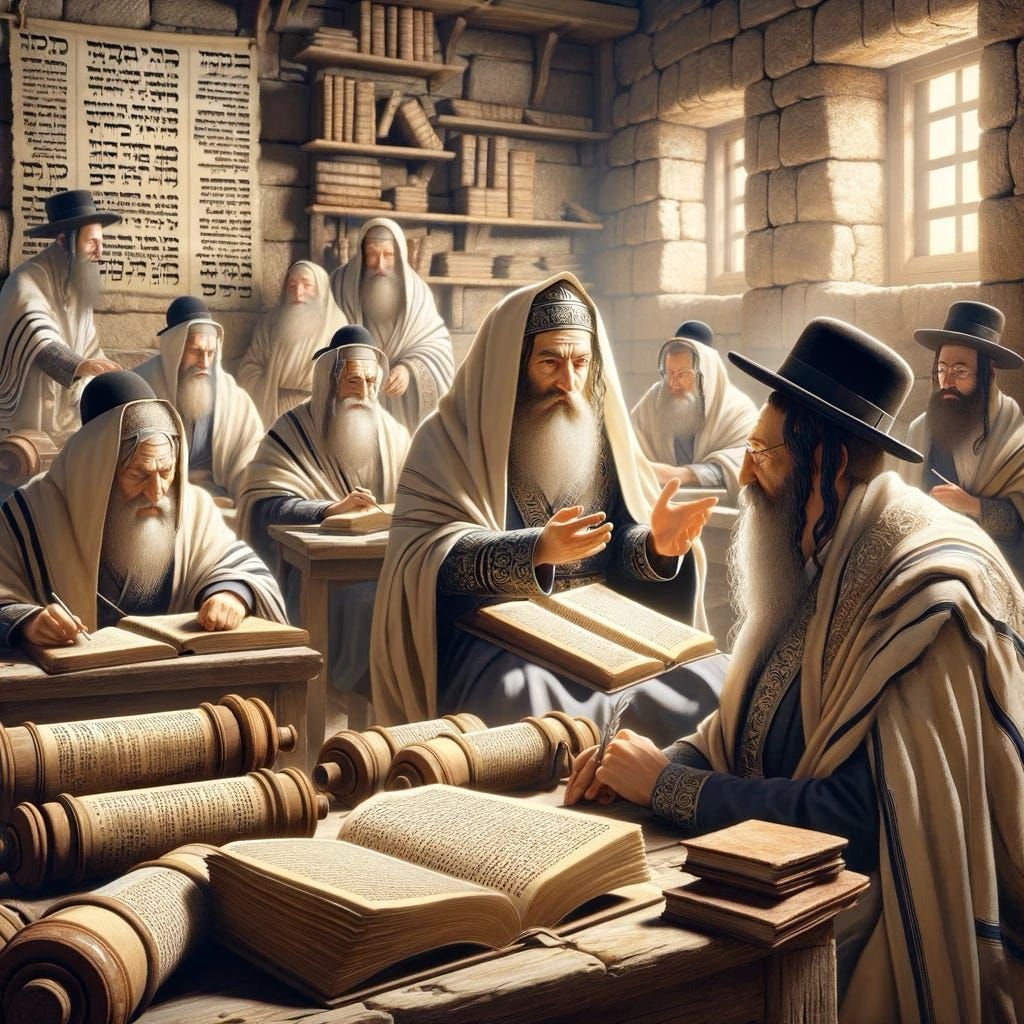
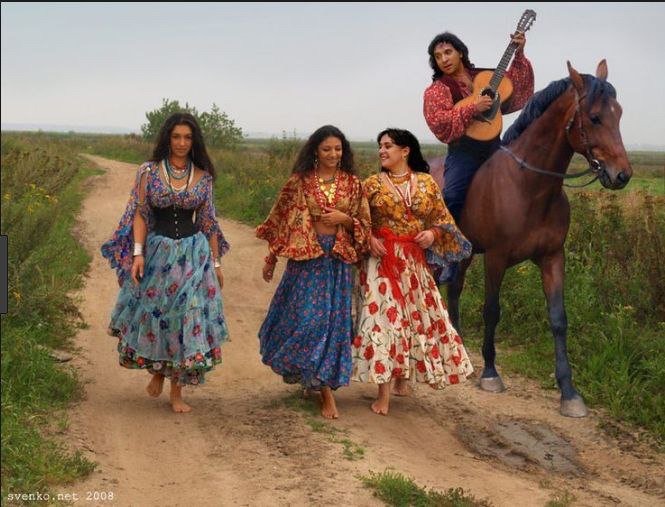
There is also a theory prevalent among researchers, and originally I believe put forward by the late great Jim Chesnar that; there was another group of people that didn’t like the new system either, but that instead of leaving with the Sieannare’s, they actually went back to India and eventually became the mighty Sikh warriors. The term ‘Sikh’ apparently originates from Sanskrit meaning Seeker, Disciple, or Student – so perhaps they were indeed seeking something else. Male Sikhs generally have ‘Singh’ - meaning Lion as their last name, likewise, female Sikhs have ‘Kaur’ - meaning Princess as their last name. These unique last names were given by the Gurus to allow Sikhs to stand out, and also as an act of defiance towards India's caste system, which the Gurus were always against. Sikhs strongly believe in the concept of ‘Sarbat da Bhala’, or Welfare of All, a way nicer sentiment than we’re ‘God’s chosen people’ which means ‘we’re better than you’.
According to established understanding, Moses wrote the ‘books’ of Genesis, Exodus, Leviticus, Numbers and Deuteronomy, also referred to as the ‘first five books of the Hebrew Bible’ and collectively known as the Torah. These five books then formed the basis of the Old Testament part of the later Christian bible, along with further books added and in different combinations per denomination – as in a Protestant bible and a Catholic bible contained some different books between them. However, Moses didn’t pluck these tales from thin air, many are based on even older stories such as the Epic of Gilgamesh – which is accredited as being the source of the great flood story; the baby Moses drifting down a river in a basket parallels the tale of Sargon, founder of Akkad in Sumerian mythology; parts of Ecclesiastes are based on parts of the Egyptian Prisse Papyrys, and Psalm 104 is based on the Hymn to the Aten – to name but a few.
Continuing the timeline of the prophets and, as touched on in the previous chaper, circa BC 500 the first Buddha arrives in Hindustan. “Han Oden’s man kom som Asernasbud” says the old adage in Root. A ‘Bud’ is a Messenger, and a messenger from the ‘A’ would be a messenger from the Aser, and one of the ten sons from the top family. [‘Bud’ survives in Dutch as ‘Bode’ meaning Postman]. Let’s add some further detail; arriving in Nepal he brings with him not a mythology, not a re-legion, but a Philosophy – which itself is derived from Sophia meaning – Wisdom in Greek, who is the goddess of wisdom in Gnosticism. The Buddha knew that at some point in this Kali-Yuga there would be a great destruction (Ragnarök) when man will go berserk. In a nutshell, this is why Buddhists tend to sit quietly in temples high in the mountains meditating whilst everyone else seemingly goes nuts in the cities – let the crazy happen. Word has spread back to Odenma of the exploits of Krishna, and Buddha comes as a kind of reformer - he creates a heart-philosophy and in a way tries to re-establish something akin to the original system, although he knows he cannot undo what his relative did. He succeeds for a time until King Ashok Askoka, AKA Ashoka the Great took over and built the Mauryan Empire [BC 322-185] based on Buddhist philosophy - but when he dies the empire starts falling apart. During this period – about 200 years before Christ – a Brahmin priest who has been using the power received from the story of Kristina, starts putting out a book called the Mahabarata, with war stories to regain power they had been losing from Buddha’s reformation. Buddhism was all but successfully eradicated from the southern Indian continent and moved up into Tibet and across to China during the Han period. Buddhism is the oldest non-native ‘religion’ and it its early days was primarily practiced by foreign monks and merchants.



Terminology check: there are only three true re-legions which are the as you would guess, the three ‘Abrahamic’ faiths of Judaism, Christianity and Islam. The rest, apart from any offshoots of the main three are all either mythologies (e.g. Hinduism) or philosophies (e.g. Buddhism). It is possible that because the ‘big three’ did not originate in Hindistan / Hindustan that they are therefore ‘A-brahmin’; ‘A’ as in the Greek prefix denoting without and meaning in this instance - without a Brahmin or Bra-man. This is the logical contender for the meaning behind the naming of the character Abraham.
A very naughty boy. Around 500 years after the arrival of the first Bud-A in Hindustan, back in Odenma there is a young lady named Margareta. She was from the top family of Piroet, a first-born daughter, so was also therefore a ‘Maija’ in-waiting as she was not yet twenty-seven years old, and would have been Queen of the Planet a few years later. Margareta became pregnant by one of the ‘Tentinio’ – the ten brothers from the previous generation – her uncle [name unknown]. This was considered a shameful act, and as a result, the pair are exiled and leave – as its winter-time they walk across the frozen Gulf of Finland heading south for continental Europe. As they pass through Europe, Margareta gives birth to a baby boy whilst on one of the many trade routes, and they eventually reach and settle for a while in what is today called Istanbul, then-known as Byzantium where the father gets a job as an advisor in the court of the Sultan. Their son gets the name of ‘Isoben Akabu’, and spends some of his earliest years in the Sultans court. Until one day, the Sultan sends the father on an important mission to the court of the Pharaoh in Egypt as a foreign ambassador, it is a permanent position and he takes his family with him.
So it came to pass that their son would grow up in the court of the Pharaoh. In the ancient world caravans were not only vital for moving goods, animals and people, but also for carrying messages such as letters or scrolls between kings, and especially by word of mouth. As such, traders were privy to lots of information, which they could use to their advantage. It was almost the internet of its time – you thought dial-up was slow – try walking pace! So as caravans rolled in and out of the kingdom, young Isoben also became privy to certain information – hearing all kinds of tales from across the world. In one story, he hears that one of his relatives has gone crazy in Hindustan, and has instituted a system of marriage in-caste and, coming from a same-caste mother and father he decides to travel there himself to see what he can learn. There, he spends many years wandering with the Baba’s and Sadhu’s eventually becoming somewhat of a wise-man himself. In a similar fashion to Krishna before him, also inspired by the Story of Kristina (but with a different interpretation) he adopts the title of ‘Jesus Kristos’, in this fashion we can say that Jesus was a follower of Krishna – the Sanskrit transliteration of which is ‘Kṛṣṇa’. After reading the Torah, written by another of his relatives, he comes to the conclusion that he could be this ‘Messiah’ promised in the book - or at least thinks he can fulfil that role with some different thinking - and returns to the Middle-East via caravan as another reformer.
He arrives in the area of Palestine / Israel, which is an odd name as when you break it down it points straight back to the actual hol-i-land at the old north pole: ‘Is-Ra-eL’ in Root means – Ice-King-Law, or ‘The law of the ice King’. ‘Palestine’ could well be constructed from ‘Pål’ – Pole + ‘eS’ – Sun, and the suffix ‘tine’ means ‘pertaining to’ or ‘of’, a cognate English suffix would be ‘like’ – so perhaps something akin to ‘Sun-pole-like’. However, it can also be spelled ‘Palestina’, which could break down as ‘Pål’ + ‘Es’ + ‘Tina’, or ‘Pole-Sun-Thaw’. Here he begins to give talks and sermons on his own knowledge in an attempt to start his own system, he gives many sermons on the heart (Tor) which was missing from the Judaic system, and tells that he was the one they’d been waiting for - but his teachings were not well-received by the majority of the people, or the powers that be. Audiences didn’t think he was talking about the heart, so perhaps it was already too late in terms of logic, as at that stage they were probably thinking more of the pump in the chest rather than between the legs. He is subsequently arrested and tried by the Sanhedrin Rabbis, who were a legislative and judicial assembly of either 23 or 71 elders, a local version of a central system back then – which should mean that he was tried at a local rather than supreme court.

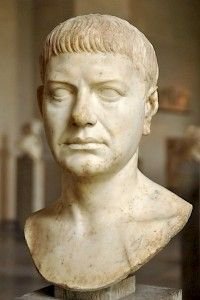
The Romans are in charge at this point, and their governor is one Pontius Pilatus who sentences him – but this is where Bock Saga differs from canonical gospels; according to this information Jesus was tied (not nailed) to a ‘Shame Pole’ for three days, where people spat on him and threw eggs and tomatoes at him. When his sentence was up, his twelve friends cut him down and together they escaped back to Hindustan. Jesus remained there for the rest of his days as a highly respected Sadhu and lived on a house-boat on lake Dal. After his death at a ripe old age he was cremated, his ashes were scattered in the river Ganges, and his ‘grave’ can be found at the Roza Bal / Rozabal / Rouza Bal shrine in Srinagar, Kashmir. The shrine rather more resembles a small house than what we might typically envisage – a single storey building, painted white, with covered windows and a green corrugated tin roof – apart from the octagonal structure, which protrudes from the middle of the roof. The shrine itself cannot be publicly accessed, and is fenced and chained-off. ‘Roza’ is a Perso-Arabic term used in the Middle East and Indian subcontinent meaning Shrine or Tomb, and a ‘Bal’ means Place amongst other things in Kashmiri. There is a quite interesting link from Bal to ‘Baile’ which is a Scottish-Gaelic word meaning a small settlement or farmstead, and used in place names.
As recounted in ‘The God Tree’ by Janis Fry and Allen Meredith; there is a legend that when Adam was buried three seeds were placed in his mouth, and a branch was planted on his grave. This branch grew into the tree at Golgtha (Gagultâ) where Jesus was hung – and that this was the Yew tree from which Moses took his burning branch. These prophecies were related to how original sin was to be lifted – by Jesus choosing the ritual, not dying for people’s future sins. The Dead Sea Scrolls state – “…for he who is hanged on the tree is accursed of God and men...” In this version the Sanhedrin carry out the ritual hanging in accordance with Jewish law, as Jesus refused to follow some of the Jewish laws such as the stoning of women, was guilty of blasphemy for claiming to be the son of God, and was seen to be working against their religion. Furthermore, a quote from the Qumran Temple Scrolls (BC 200) states – “If a man be found guilty of a capital offence is to be put to death and his body is to be hung on a tree, you must not leave the body on the tree overnight.” A local physician who had knowledge of medicinal plants is said to have been involved with the removal of Jesus’ body to the tomb, and may well have given him ‘Soma’ made from yew berries, giving the appearance of death by slowing the pulse to an indiscernible pace.
The authors suggest that it was during the reign of Constantine that the story of Jesus being hung on a tree was altered to a wooden cross. This was because of the powerful connection to stories from multiple mythologies that feature other gods hung on trees and / or resurrected, and coincide with a spring resurrection - which would make bringing other Pagan tribes under the yoke easier over time.
Examples of these stories are; Odin on Yggdrasil who self-sacrificed to gain wisdom; Tammuz the lover of Ishtar in Mesopotamian mythology who died each winter and was revived using the ‘water of life’ each spring by Allatu; The Phrygian tale of Attis who was brought back to life each spring equinox by the fertility goddess Cybele. The Hindu tradition of Savitri and Satyavan, the Buddhist tale of Bodhidharma and his shoe, and the poisoning of Quetzalcoatl in Meso-American lore. Nommo a primordial ancestral spirit of Dogon cosmology in Mali who gets killed, chopped up, scattered across the world to give it order then, reconstituted and revived – which parallels the story of Osiris who met an extremely similar fate.


The fact that Jesus travelled back to India and stayed there rather than returning to see his family in Egypt lends further credence to the ‘Kristos follower of Krishna’ notion. According to the writings of a Russian aristocrat named Nicolas Notovitch - who apparently travelled to a Buddhist monastery in Northern India – the head monk told him that a saint ‘Issa’ from Jerusalem had travelled to India during his “lost years”, i.e. before arriving in Judea. Subsequent scholars have predictably discredited this story, and apparently, the monastery denies him ever visiting. In a book called ‘Jesus in India’ by Hazrat Mirza Ghulam Ahmad, the author puts forth the view that Jesus survived the crucifixion and went to India in search of the ‘Lost tribes of Israel’. One of Ghulam’s disciples told him about a shrine in Srinagar, said to be the tomb of the prophet ‘Yuz Asaf’ – a name some historians suggest Jesus adopted in Kashmir. His study of the traditions of the locals of Kashmir revealed that there was indeed a shrine dedicated to ‘Nabi Isa’ – prophet Jesus. However, the name Yuz Asaf (in various forms) is also an Arabic and Urdu variation of ‘Josaphat’ and connected with Christianised and Islamised versions of the life of the Buddha, which confuses things. In another supposed interpretation of exactly the same name; ‘Yuzu’ is said to mean Jesus and that ‘Azaf’ means Gatherer in Hebrew – as in the gatherer of the lost sheep etc. It is further said, that he arrived from Syria about two-thousand years ago, and that he lived to be one-hundred and twenty years old. There is also a controversial scroll known as the ‘Life of Issa’: the ‘Best of the Sons of Men’, which talks about Jesus in India and Tibet – this is also dismissed as a hoax.
The confusion may well lie in the fact that many places of this ilk get repurposed and re-designated when cultures and religions change, as they often do. It was originally recognised as a Buddhist or Hindu shrine, but then latterly also a Muslim one. According to one tradition, there are two Muslim prophets buried here; one of them is buried according to the traditions of Islam, and the other tomb is apparently constructed in the Jewish style of the sepulchre, with a wooden cross or sword standing in front of it. Another tradition has it that entombed is a prophet of ‘Ahl-al-Kitab’ or the People of the Book (Christians), and that his name was ‘Isa’ – the Qur’anic Jesus. There are also said to be footprints set in stone next to the coffin, and that these footprints show evidence of wounds to the feet, suggesting that Jesus escaped the crucifixion – these ‘footprints’ are actually a carving, and are quite obviously so when viewed. But who made them, and why is a mystery? - even if they do appear to show scars on the feet as if one foot were nailed on top of the other with a single large nail.
At a remote location deep in the furthermost reaches of the hills of Hokkaido island northern Japan, nestled amongst Buddhist and Shinto gods and myths is a place known to some as ‘Kirisuto no Sato’ or, - the Village of Christ. Legend* has it that during his ‘lost years’ at the age of 21 Jesus had travelled to Japan – during the reign of the eleventh Emperor, Suinin, where he stayed for twelve years pursuing knowledge of divinity - which sounds very similar to the Jesus in India story of Bock Saga. But whereas in that version he travels by caravan, in this version he comes by boat and makes land at the West-coast Port of Amanohashidate, which is located on a sand-bar in Miyazu Bay in Kyoto Prefecture. Here he became a disciple of a great master near Mount Fuji learning eastern languages, culture and philosophy, before leaving to pursue his mission to Judea.
After the supposed crucifixion, in this story he returns to Japan – this time via Morocco – and is now aged thirty-three. However, in a conflicting account he returns via Siberia and into the archaic Northern Mutsu Province, a journey that takes four years. He then apparently changes his name to ‘Taro Jurai Daitenku’ (also sometimes recorded as ‘Torai Tora Daitenku’. The story goes that this travelling shepherd settled in the village of Shingō, also known as ‘Herai’ to grow garlic, and there he fell in love with a local girl, a farmers’ daughter named Miyuko, with whom he fathered three daughters. He reputedly died at the age of one-hundred and six, and is according to local legend buried in a tomb within a shrine there called ‘Kirisuto no Haka’ meaning, - the Tomb of Christ.
In a grove in the village lie a pair of earthen burial mounds with a large wooden cross (Risti) standing in the centre, and are surrounded by a white picket-fence which constitutes the shrine – this is maintained by a local yoghurt factory. Meanwhile, nearby is the ‘Legend of Christ’ museum, all of which is set in ‘Christ Park’ which is a very popular destination for tourists, religious pilgrims and Pagans who flock here and shell out the ¥100 entrance fee giving access to the museum and gift shop with a predictable array of wares. In the springtime, there is a ‘Christ Festival’, in which what can only be described as a hodge-podge of different rites from various faiths and denominations take place - including one where three women dressed in traditional Japanese Kimono’s dance around the mounds whilst repeatedly reciting a short three-lined invocation in an unknown tongue.
But here’s the twist - in the Japanese version the Jesus story has an alternate ending; at the crucifixion, his hitherto unknown brother switches places with him and ends his life on the cross instead! This brother is confusingly named ‘Isukiri’, which looks like a variant of Jesus Christ itself– perhaps how he traded places with him so easily? In the process of sacrificing himself for his brother, he somehow loses an ear, which along with a lock of his mother’s hair Jesus takes with him as keepsakes as he escapes back to Nippon, landing in nearby Hachinohe, and assuming his new identity as Torai. This is why there are two mounds at the shrine, and they are said to be buried with his brother’s ear and a lock of the Virgin Mary’s hair. He is said to have lived out his days ministering to the needy, sporting balding grey hair, and a “coat of many folds”. He apparently had a bit of a conk on him too, earning him the nickname “long-nosed goblin”.
When he died it is said that his body was left exposed on a hilltop for four years, which makes it sound like a typical Buddhist sky-burial as practiced in Tibet for example however, these usually take a mere three days. In accordance with the customs of the time, his bones were then bundled and interred beneath the mounds. His eldest daughter married into the Sawaguchi family, who claim to hold a direct lineage to Christ by evidence of certain non-Japanese characteristics such as blue eyes. Author’s note: The ethnic group that makes up over 98% of the Japanese population is ‘Yamato’, but prior to this genotype spreading throughout Japan after migrations of their antecedents, the northern island of Hokkaido was inhabited primarily by the Ainu people. Older maps label the island as Ainu, and the people themselves called it ‘Ainu Mosir’ or, - the Land of the Ainu. The Ainu experienced near-total assimilation into Japanese society – so much so that some are unaware of their Ainu heritage. It was once speculated that these people were of Caucasian origin or mixing owing to their differing features and skin tone. Interest in the Ainu people grew internationally not so long ago regarding a photo of a ‘white-looking’ Samurai who looked rather Caucasian at a temple and / or museum – I cannot seem to find the story now but I remember that when a westerner asked about the photograph, the guide pretended to not have understood the question and swiftly moved on. Although the Caucasian connection has officially been debunked, the Ainu themselves hold that they are ethnically close to Paleo-Siberians such as the Chukchi people, but that “…there is a deeply rooted European-related component in our gene pool, but overall we are closer to Eastern Asian…” – Alexei Muraki: ethnic Ainu from Karput. The Ainu also tend to grow hair in places of the body where it is not normal to find a lot of hair growth, especially in comparison with other East Asian populations – this is accounted for in their belief that their first ancestor was a bear.
All the above tales of Jesus in Japan are credited as coming from the controversial ‘Takenouchi Manuscripts’ which are of mysterious origin. Said to have been first copied into a mix of Japanese and Chinese characters called ‘Kana’, some fifteen-hundred years ago by a member of the Takenouchi family named Matori, from a “divine language” called ‘Jindai’. The Jindai lettering system was allegedly the oldest in Japan, but has been refuted to even exist by classical Japanese scholars since at least the eighteenth century, and its characters are considered forgeries. This mystical script from “the age of the god” is supposed to have contained all the elements of all human languages, including Chinese, Egyptian hieroglyphs, Greek, Hebrew, Roman, Sanskrit and Sumerian. Very similar in nature to the claim that ‘Agartha’ was a repository of the original human language. It is obviously regarded as pseudo-historical by mainstream academia and religious scholars, and the original was apparently destroyed in the bombing of Nagasaki in the Second World War, after having been seized by government officials – convenient? A copy remains in Shringō at the museum. It is also interesting to note that the names of both locations in India and Japan - Srinagar and Shringō – seem to be based on the word ‘Shrine’.
In the manuscript is an alternative creation story of humanity, a Japan-centric one at that. In a brief summary, as I only wish to draw comparison, it states that; the gods created humans, and that the sons of the gods created people of five different colours; red, yellow, white, blue and black – which they scattered across the earth. [Myths that include multiple creation stories for different races are known as ‘Polygenism’]. Japan was the centre of the world, “…from where the gods created races and dispersed them outwards.” The ‘sons of the gods’ creating more people sounds very similar to both the Aser demi-gods, and the subsequent ‘Giants’ of the bible on which they are based. The first god-emperor of this state was ‘Sumera-Mikoto’, which looks remarkably similar to Sumer or Sumeria, and we also have the ubiquitous ‘Su’ denoting a possible connection to Finland. Which we actually might find hints towards in the description of his arrival from a “higher world” in his ‘Ameno-ukifune’ or, - Flying ship – along with the claim that; “The great holy masters of the world, Moses, Jesus, Mohammed, Buddha, Confucius and Lao-Tsu – were all born from the five-coloured races (one from each) which branched off from the Japanese race”. It elsewhere also mentions the sinking / destruction of the ‘lost’ continents of ‘Mu’ and Atlantis, tying in with other post-ice mythologies – these were destroyed by tremendous catastrophes called ‘Tempenchii’ – which appears to be related to Tempest.
Returning to the story after Jesus; only a few centuries later did it become evident that somebody had been paying attention, or had they? The period immediately after Jesus’ supposed death is referred to as the ‘Apostolic Age’, which is viewed as the period up until the death of the last of the twelve Apostles. This is of course a fiction, as Jesus’ twelve friends had in fact left for India as detailed. The notable events and ‘good works’ of his life are collected into the ‘Ministry of Jesus’ which details events from AD 27-29, or from the age of thirty until his supposed crucifixion, or should that be Cruci-fiction? The ‘Ion’ (lower classes) did become (trans)Fix(ed) on the Cruc / Cross – it literally became the Crux of their conditioning – fixating on a dead person (creating a death cult) rather than your Tor friend, which was represented by the mark ‘T’ and co-opted into the religious icon of Christ on the cross. We must also remember here that the unequal cross was a pre-existing symbol called ‘Risti’, which forms the second part of the word ‘Christian / Kristian’, and that both Krishna and Kristos were both inspired by Kristina – which is linked to the root ‘Kris’ meaning Crisis. A crisis as we have mentioned is not inherently negative, just a large and rapid change - these people leaving the arctic seem to cause them and live up to their chosen names, they were arbiters of Kris. Yet while Krishna both directly participated in and observed the beginnings of his own crisis in Hindustan, the same cannot be said of Jesus as he was deified after-the-fact. In AD 273 the date of 25th of December was chosen to be Jesus’ birthday – despite it not being in the bible, or recorded anywhere for that matter - which came shortly after the decision by the Roman Emperor Aurelian to make said date the birthday of the ‘Invincible Sun’ for the Roman winter solstice.
The First Council of Nicea, a Bithynian city, which is now called İznik in modern-day Turkey [‘Tor-Kyy’] was convened in the early summer of AD 325. Christianity had some real bones to it now, a hierarchical structure of ‘dissemination’ – a word itself linked to the seed of the old world. At the pinnacle of this organisation were the ‘Bishops’, whose title derived from ‘Vishnu’, a principle deity in Hinduism. In the first of his ten incarnations, the god Vishnu took the form of a fish (Matsya) to save humanity from the great deluge, which seems to have influenced his name. Often depicted as half-man, half-fish, and sometimes as a full golden fish – which is then represented by the headwear of the Christian Bishops, the Mitre, which look like the head of a fish with an open mouth; and via the usual ‘musical chairs’ which involve the letters B, F, P and V we observe the links; Fish >> Vishnu >> Bishop. A council of these bishops and business leaders from around the Mediterranean is gathered by the Roman Emperor Constantine where between them they devise a new version of this nascent Christianity.



The council realise that by utilising the new book system, they can run a much more effective business. No longer was the message conveyed purely orally, it was now written too, and by writing the message the logical associations with sounds in one’s brain were no longer part of the equation. Any association was now with the letters, which with no logic to pair, were meaningless – this meant that the sound-system became perverted. The word ‘Perverted’ comes from ‘Perverse’ however, this is actually another inversion; ‘Per or Pär’s verse’ would be what the father had to say, or Fathers’ Word. This perversion allowed the newly created Church to pretty much take over all of Europe eventually, and it meant that the now thought-controlled masses no longer lived according to the laws of nature. Instead of operating on instincts, intuition, natural law and gut-feeling people now operated on pre-determined thought patterns using priests and the bible as guides. Pär’s verse was now replaced with teachings that had been passed down the hierarchical structure of the Church to the local priest, which mirrored the original pyramid scheme of information coming down from the All-Father at the top of the planet – except, it was now an unnatural form of brainwashing, and only masquerading as being of universal benefit. These huge changes in the way that children are made, and the people are educated signifies the end of Pagan / Heathen life, and a new age of darkness begins for humanity.
In AD 312 Emperor Constantine [reign AD 306-337] won the Batlle of Milvian Bridge, where he fought against Western Emperor Maxentius to take his throne – and when victorious credited his victory to the Christian God, thereby officially converting to Christianity. In AD 336 the Roman solar feast founded only sixty-three years earlier was Christianised, and the church in Rome began formally celebrating Christmas on the 25th of December of that year.
Looking back at the original version of the story coming from Bock Saga, we can see where certain elements have originated in the subsequent ‘Gospel’ or bible versions, as the bishops heavily embellished the overall story of Jesus, previously known as Isoben. For example; Jesus did walk on water – when he was yet unborn in his mother’s womb, crossing the frozen Finnish gulf. That part of the story in particular, where they are on the move, which necessitated giving birth whilst travelling is copied directly into the Mary and Joseph story. Whilst other things such as astronomical machinations are woven into the ‘Resurrection’ part, as facts pertaining to the Sun are taken and re-applied to the Son (of God). We also note here that in the previously mentioned story from the Takenouchi manuscripts, the ruler of earth – the Sumera Mikoto is referred to as ‘The son of the sun’.
Close to the end of how we currently measure a year, the sun reaches the winter end of its elliptical orbit called Perihelion as it approaches the winter solstice. The word ‘Perihelion’ comes from the Greek ‘Peri’ menaing Near, and ‘Helios’ the Greek god of the sun - whilst the word ‘Solstice’ is derived from the Latin ‘Sol’ – Sun, + ‘Sistere’ – to Stand Still. The first day of Winter in the northern hemisphere is between December 21st – 23rd, the day with the least amount of possible daylight and the longest night, when the Tropic of Capricorn is directly aligned with the sun. Thus the sun appears to ‘die’, and is ‘reborn’ three days later as it begins its journey back the other way. One wonders if when formulating the language of Latin - which is often far removed from natural sounds - whether the aforementioned word ‘Sistere’ meaning to stand still, is one of the many examples of the removal of the feminine principle from world logic? Point being, that it bears striking resemblance to Sister in English. The goddesses no longer acted, they stood still as were unrecognised, even demonised in the backwards world of Re-legion.



The winter solstice is still known to Pagans as Yule, or Yuletide in English, coming from the Root ‘Jul’ – which is also linked to one of the set of titles held by retired All-Father and Earth-Mother – Ukko and Akka – the grandfather and grandmother figures in the top family of our previously earthly-gods. These titles are ‘Jul Gubbe’ and ‘Jul Gumma’ or: Yule Father and Yule Mother – one of which may give you a clue to something we will get to later in the story – there is a further clue in the ‘Yule Goat’, which is also known as a ‘Straw Bock’. Six months later in July is the opposite phenomena of ‘Aphelion’, the prefix ‘Ap’ deriving from the Latin meaning Away from. Jul is obviously also the root of the Julian calendar. I stated earlier “how we currently measure a year” as I thought it was also worth noting changes to the calendar. Logically speaking the year should begin in spring [Vär] when everything else renews as in nature, rather than a third of the way into winter. If it began in March, and we counted, from there we can easily see that it once did, as the names of the months attest; September should be the seventh month, October the eighth, November the ninth, and December the tenth month. This change is apparently due to a rebellion in BC 154 (possibly in the aftermath of the Second Celtiberian War) which forced the Roman senate to change the beginning of the civil year from the Ides of March to ‘Kalends’ of January so that newly elected consuls could assume office. ‘Kalends’ means the first day of the month, and is obviously where we get the English - Calendar. There are further logical arguments for thirteen lunar months being a way better, and more natural system than twelve solar, but we won’t get into that here.
According to Matthew 27:43 – while Jesus is on the cross, the Judean leaders mock him to ask God for help, “…for he said, I am the son of God”. But according to his origin story from Bock Saga you could say he was from the family of gods for sure – the original heavenly gods that this whole mess takes most of its key themes and terminology from. Jesus was from what we would call Finland today, his mother and father were Aser, meaning that he was definitely Caucasian, and also definitely means that Jesus Christ was conceived in Hel – but that wasn’t such a bad thing was it? However, my favourite part of ‘The Goat Herders Guide to the Galaxy’ is when Jesus was alone in the desert talking to God, and someone who wasn’t there wrote about it.
The family of Aser gods were also the family of the goat, or Bock. The traditional Chinese character for ‘Righteousness’ is 義 or ‘Yi’, which if split into its constituent characters of 羊 or ‘Yáng’, and 我 or ‘Wǒ’ mean Sheep (or Lamb) and Me respectively – yet the addition of 山 or ‘Shān’ meaning Mountain to create 山羊 or ‘Shānyáng’ makes it a Goat – I will let the reader deduce their own logical understanding from this.
Standby for the continuation in part 6.
………………………………………………………………………………………………………………………………………………………………….
V-1.0 © Renegade Signal 2024.







